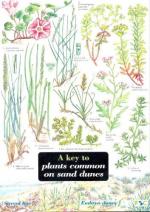|
This section contains 506 words (approx. 2 pages at 300 words per page) |

|
Dunes are well-sorted deposits of materials by wind or water that take on a characteristic shape and that retain that general shape as material is further transported by wind or water. Desert dunes classifications are based upon shape include barchan dunes, relic dunes, transverse dunes, lineal dunes, and blount (parabolic) dunes. Dunes formed by wind are common in desert areas and dunes formed by water are common in coastal areas. Dunes can also form on the bottom of flowing water (e.g., stream and river beds).
When water is the depositing and shaping agent, dunes are a bedform that are created by saltation and deposition of particles unable to be carried in suspension. Similar in shape to ripples—but much larger in size—dunes erode on the upstream side and extend via deposition the downstream or downslope side.
Regardless of whether deposited by wind or water, dunes themselves...
|
This section contains 506 words (approx. 2 pages at 300 words per page) |

|


